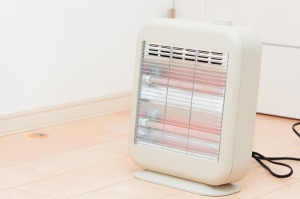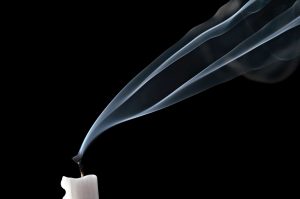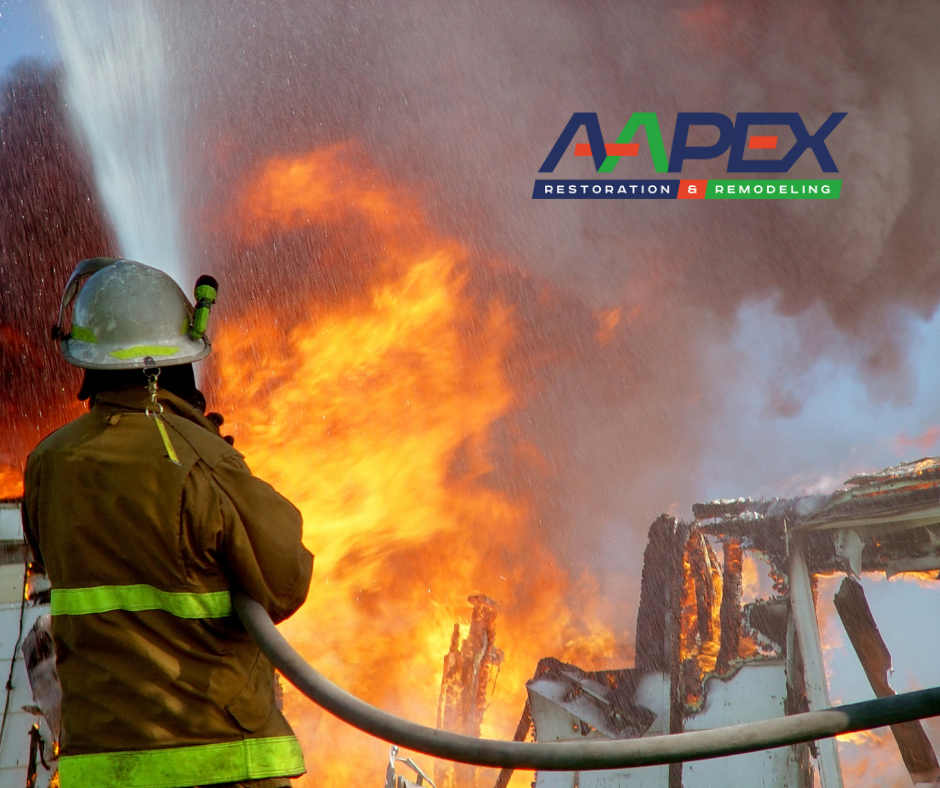According to the NFPA, there are more than 353,000 house fires in the U.S. each year, causing more than 2,600 deaths, 11,000 injuries, and more than $7 billion in property damage. Sadly, the overwhelming majority of these house fires are completely preventable. Many homeowners worry about house fires occurring in their home. They may even have emergency fire evacuation plans in place just in case. But homeowners are often unaware of the most common causes of house fires and how to prevent them. This article will help you protect your loved ones (and your home) by detailing the leading causes of house fires and how to guard against them.
Cooking

Many of us use our kitchen throughout the day without ever giving much thought to the potential fire hazards that we encounter each time we cook. Unattended pots and pans, small appliances, cooking grease, just to name a few, are common culprits in cooking fires. Recognizing these hazards is an important aspect of fire prevention. Grease and oil are extremely flammable once they reach their smoke point, which varies from oil to oil. They can easily ignite or even spontaneously combust without coming into contact with a flame. So be sure to keep a watchful eye on what’s happening in the kitchen whenever you’re cooking, especially when cooking foods that create splattering grease, like bacon.
Other common culprits in cooking fires include small appliances, like toaster ovens, microwaves, and waffle irons. In some cases, these appliances are put away while they are still hot, allowing them to come into contact with something that catches fire in the cabinet or pantry. Other times, crumbs or food residue catches fire and quickly spreads. Be sure to routinely clean these appliances and check the wires for any damage, whether frayed or melted from the heat of the appliance. Always allow them to cool completely before putting them away.
Grilling season brings many more fire hazards with grills left unattended on a wooden deck or positioned too close to the house. Not to mention the dangers of cooking with an open flame that may flare up and rage out of control. We recommend placing your grill on a stone surface, if possible, or using a fireproof mat to protect your wooden deck. A growing holiday favorite, turkey fryers cause nearly $15 million in property damage each year. These often occur when the oil spills over and ignites in the flames below or when a chef unwittingly submerges a frozen turkey, which causes the fryer to explode. Because of the dangers involved, we recommend positioning a turkey fryer far from you house and following all operating instructions precisely.
Because they involve open flames and grease, cooking fires can be particularly difficult to put out. We recommend keeping a fire extinguisher handy in your kitchen. Most homeowners put these underneath the kitchen sink or even mount them on a wall for easy access. Make sure they are charged and that you know how to use them. Never pour water on a grease fire! And most importantly, never leave a stove or grill unattended. It takes only a moment for a flame to catch and roar out of control.
Portable Heaters

As the second leading cause of home fires, heating is responsible for 14% of all home fires, and portable heaters account for a significant portion of this. As you would expect, the colder months see a drastic increase in fires caused by space heaters, which often ignite when fabric comes into contact with the heater. Tragically, fires involving heating equipment are the leading cause of home fire deaths because these fires often occur when people in the house are sleeping and unable to react quickly to prevent the spread of flames.
Be sure to position portable heaters at least 3 feet away from anything that can burn, including draperies, bedding, and furniture. Ensure the heater is secure and cannot be knocked over accidentally in the middle of the night by a wandering person or pet. Make sure your heaters have a properly functioning thermostat control and feature an automatic shutoff. Never leave your portable heater running when you are not at home.
Fireplaces & Wood-burning Stoves

The EPA estimates there are more than 17.5 million fireplaces and 10.1 million wood-burning stoves installed in households across the U.S. Confined fires—those occurring in chimneys, flues or flue burners—account for nearly 87% of all the heating fires caused each year. The largest contributing factor to these fires was a failure to properly clean creosote from heating equipment, especially chimneys. The United States Fire Association estimates that wood stoves account for more than 4,000 house fires each year, typically because they are placed too close to combustible items.
Be sure to properly clean your fireplace or wood-burning stove after each use, emptying ashes into a lidded metal container placed outside at least 10 feet from your home. Have your fireplace professionally cleaned and maintained each year to prevent a build-up of creosote that could lead to explosive chimney fires. Keep a glass or metal screen in front of your fireplace and keep the doors of your wood-burning stove closed to prevent embers or sparks from flying out and igniting nearly fabric or other combustible material. Put out all fires before going to sleep or leaving your home.
Faulty Electrical Wiring

Faulty electrical wiring, lighting, cords, and plugs cause nearly 10% of all house fires each year, ranking first in property damage and third among major fire causes. Electrical fires cause more than $1.4 billion in damage each year. Electrical fires are typically caused by either short circuits that spark and ignite building materials or from overloaded circuits that overheat and catch fire. These fires cause significant damage for several reasons. First, they often ignite inside the walls or near outlets, which are often hidden away behind furniture. These fires are not only given time to grow, but they are burning highly combustible building materials, which allows the flames to spread quickly. The electrical system inside your home is like a connected system of veins of current. If one catches fire, it can easily spread and cause significant damage in a very short space of time.
Properly installed and updated electrical systems are incredibly safe. Be sure your electrical wiring is up to code by hiring a certified electrician to complete all electrical repairs and updates on your home. If you have an older home, it is a good idea to have your electrical system evaluated to ensure that it is up to code and safe, including checking that the breaker box is sufficient, all necessary GFCI outlets are installed, and that the home is grounded.
Candles
 While open-flame candles add a lovely ambiance to your home, especially during the holidays, they account for an average of 7,600 house fires each year, resulting in more than 80 deaths, 670 injuries, and $278 million in property damage. More than a third of candle-related fires start in bedrooms, typically because combustible materials, like sheets, pillows, or curtains, come into contact with the flame. Most people do not realize that flames can also jump, so even if the candle does not come into direct contact with a flammable material, it may still be able to cause a fire. Keep open-flame candles at least 12 inches away from all combustible materials, ensuring they are securely positioned and far away from the reach of curious children or pets. Be sure to extinguish all candles whenever you leave a room. Never leave candles burning when you leave the house or go to bed. You may even consider switching to flameless LED candles, which can look and smell like their open-flame counterparts, without the worry or hazard of causing a house fire.
While open-flame candles add a lovely ambiance to your home, especially during the holidays, they account for an average of 7,600 house fires each year, resulting in more than 80 deaths, 670 injuries, and $278 million in property damage. More than a third of candle-related fires start in bedrooms, typically because combustible materials, like sheets, pillows, or curtains, come into contact with the flame. Most people do not realize that flames can also jump, so even if the candle does not come into direct contact with a flammable material, it may still be able to cause a fire. Keep open-flame candles at least 12 inches away from all combustible materials, ensuring they are securely positioned and far away from the reach of curious children or pets. Be sure to extinguish all candles whenever you leave a room. Never leave candles burning when you leave the house or go to bed. You may even consider switching to flameless LED candles, which can look and smell like their open-flame counterparts, without the worry or hazard of causing a house fire.
Smoking

While smoking-related fires only account for 5% of house fires, they are the deadliest of all home fires. Accounting for an average of 23% of all house fire deaths each year, they are the leading cause of house fire deaths. Sadly, 25% of all smoking-related house fire victims are not smokers. Because most smoking-related house fires originate in living rooms, family rooms, dens, and bedrooms, it is a good idea to only smoke outside, using “fire safe” cigarettes. Thoroughly extinguish all cigarettes in a sturdy ashtray when finished, never tossing the butts into vegetation, such as leaves, mulch, or potted plants, which may catch fire. Before tossing butts into the trash can, be sure to douse them in water or sand to ensure their flame is thoroughly extinguished.
You may be surprised to discover that fires have also been caused by e-cigarettes, often when the devices were being used or left unattended to charge. Their batteries have been known to become unstable and explode. Never leave a unit charging when you are not in the room or away from home.
Aapex Construction & Restoration is Your Trusted Fire Restoration Contractor
Have you suffered a fire loss? Aapex Construction & Restoration is a locally owned and operated company that specializes in insurance and non-insurance restoration projects, both commercial and residential. With more than 20 years of experience in the industry, we pride ourselves on exceeding our clients’ expectations when it comes to quality, attention to detail, and customer service. Our goal is to assist you in every possible way, including acting as your advocate with the insurance company, to restore your property to pre-loss conditions. Contact us today for a consultation.
Related Articles
What Does It Mean to Be an Insurance Company’s “Preferred Vendor”?

